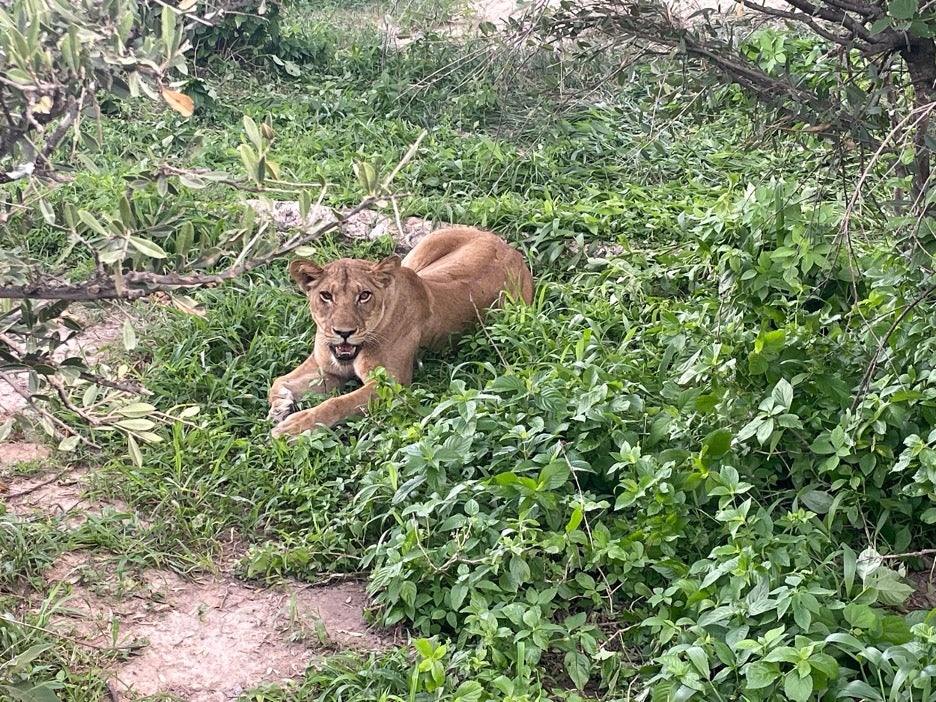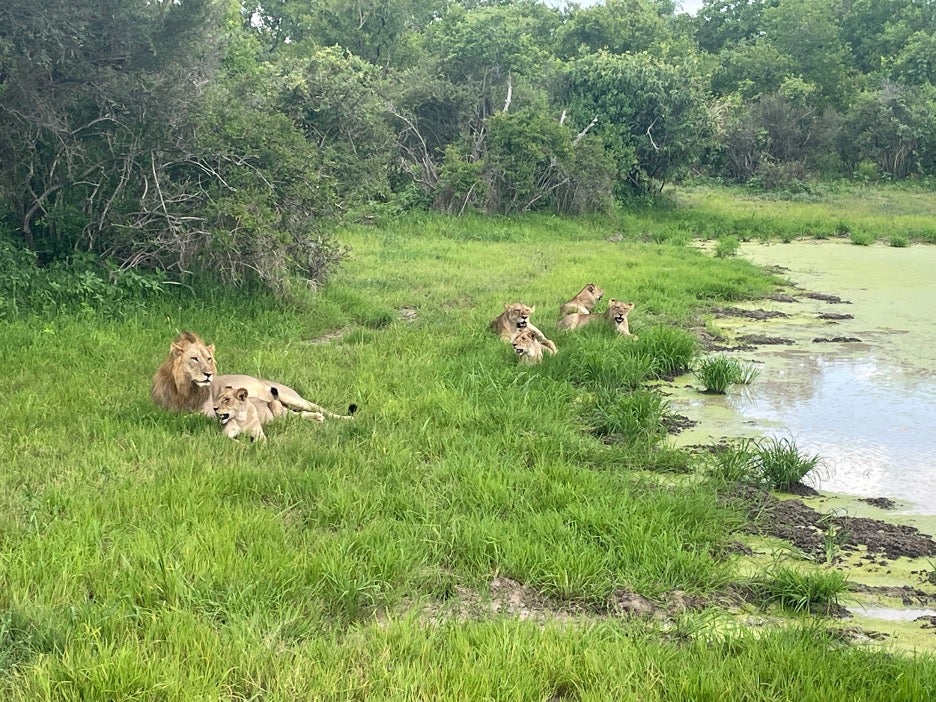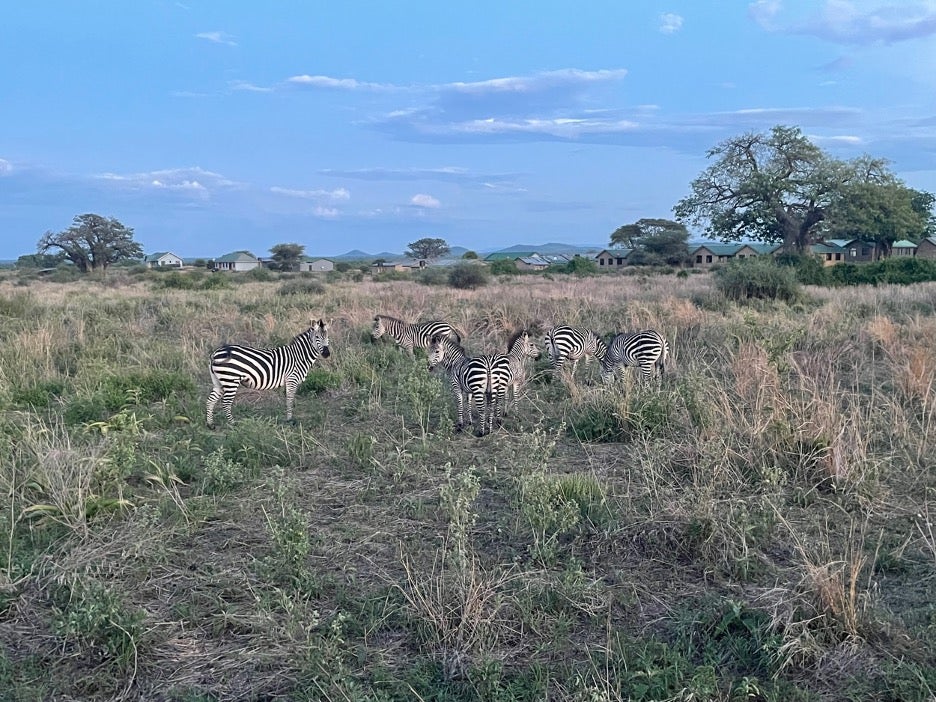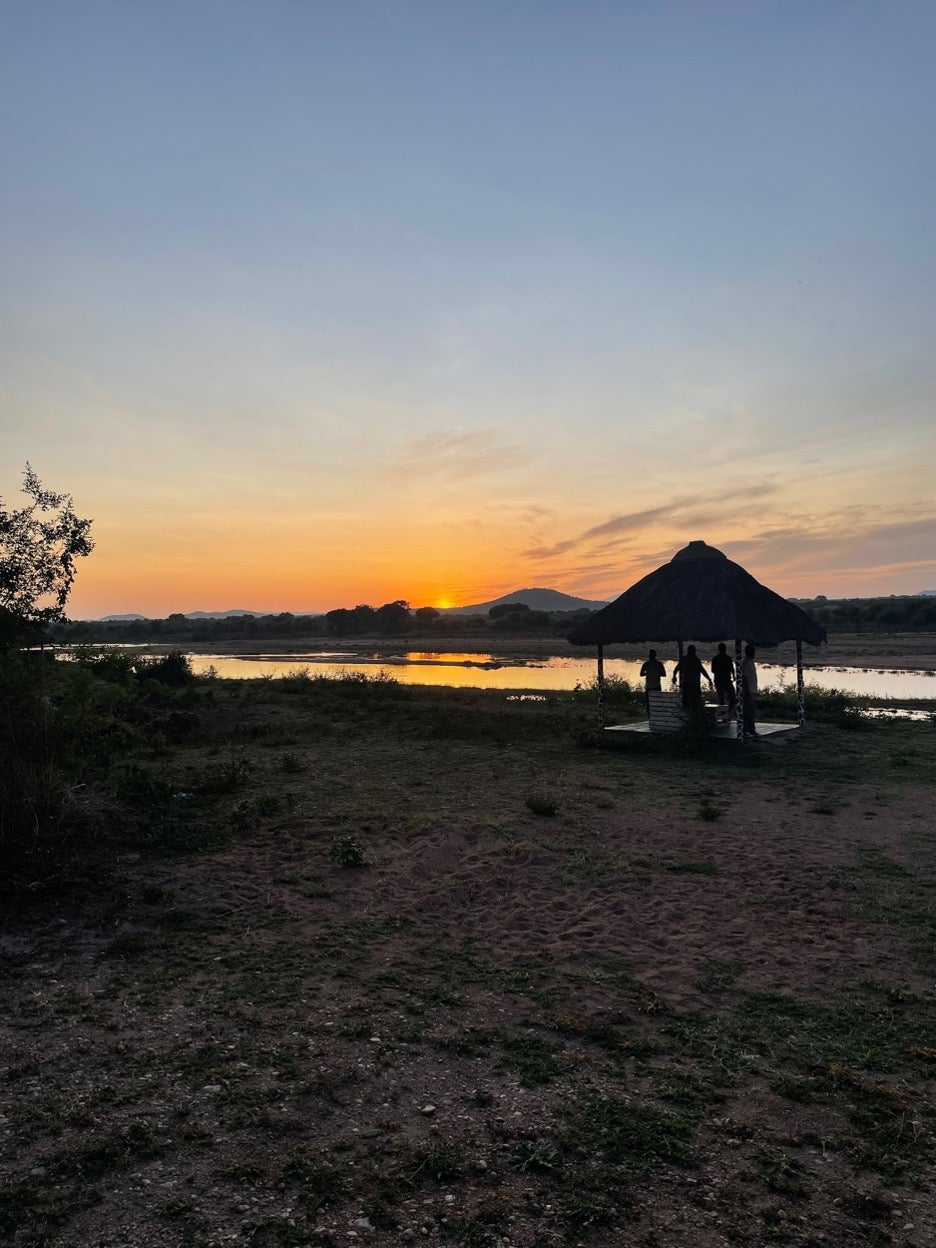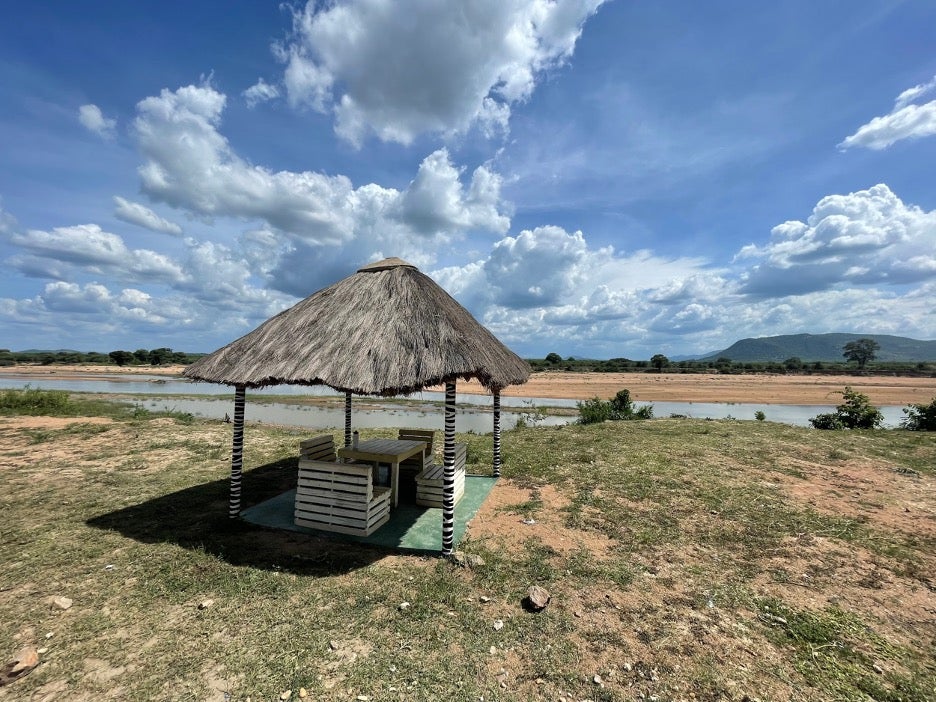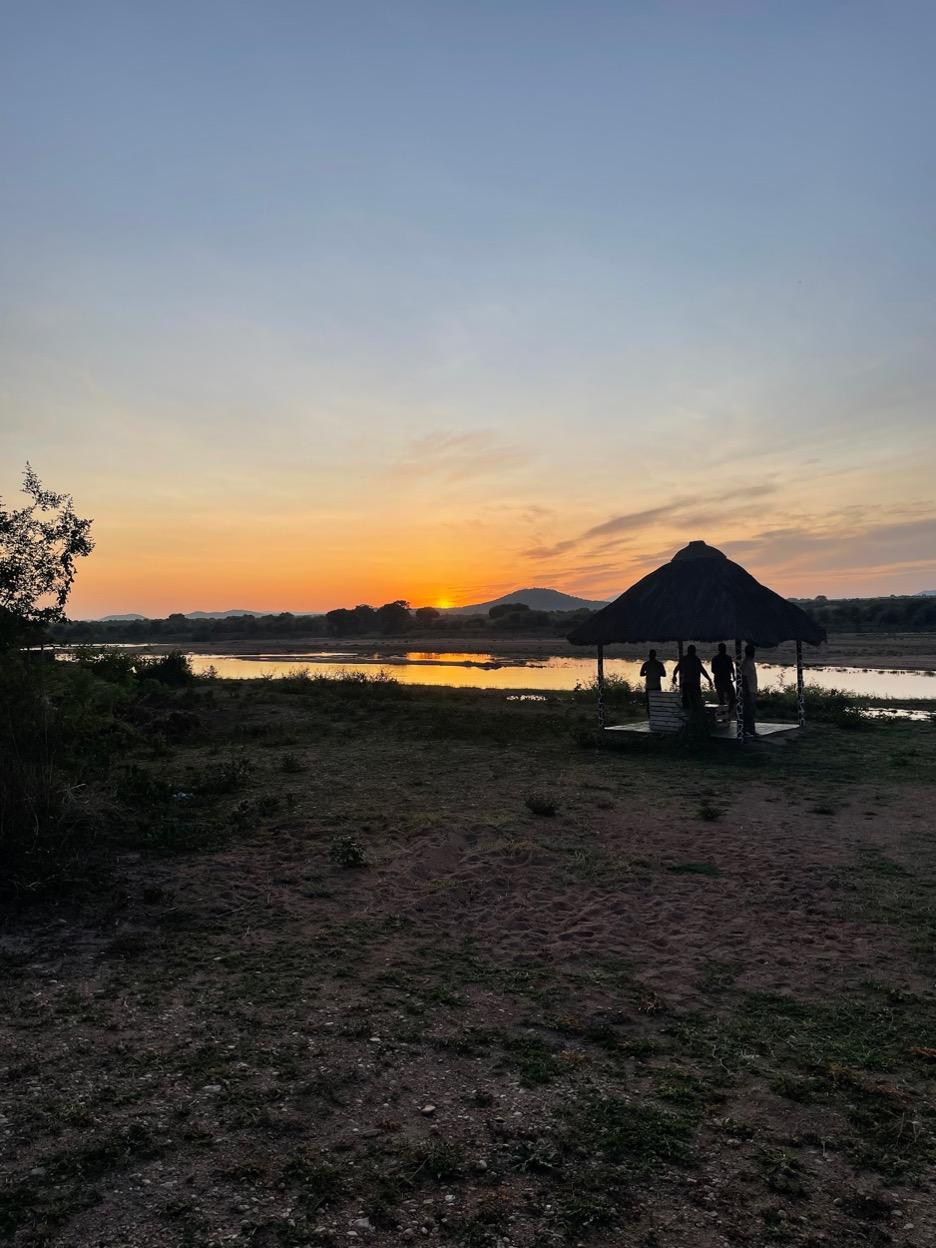TZ Winter Amp Day 8
Day 8: Saturday, January 11
Visit to Ruaha National Park
By Damani Eubanks
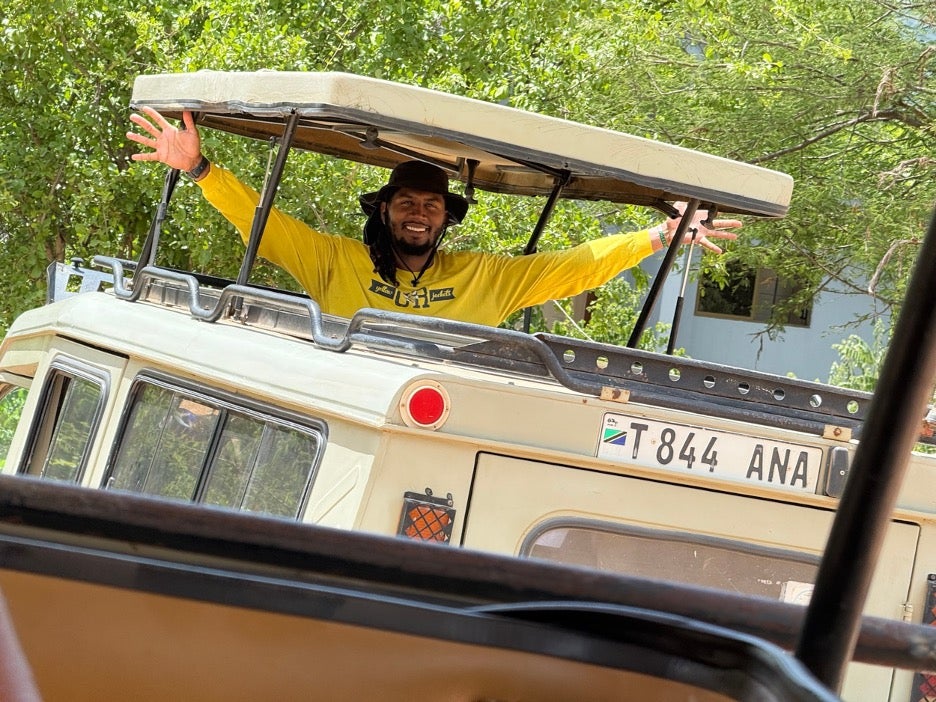 Today we traveled from Iringa to Ruaha National Park with our colleagues from Mbeya University of Science and Technology. We rode 106 kilometers in specialized safari trucks to the national park. On the way, we learned some history of Ruaha. We learned about Chief Mkawa of Wahehe tribe who fought against German colonization. The Wahehe tribe is native to Iriniga and Ruaha area. Ruaha is named after the Wahehe word for river and Iringa is named after the fortress built for Chief Mkawa. Before colonization by the Germans, the Wahehe tribe established trade networks with Arab traders exchanging animal skins and captive slaves (criminals and war prisoners) for gold, guns, and other wares.
Today we traveled from Iringa to Ruaha National Park with our colleagues from Mbeya University of Science and Technology. We rode 106 kilometers in specialized safari trucks to the national park. On the way, we learned some history of Ruaha. We learned about Chief Mkawa of Wahehe tribe who fought against German colonization. The Wahehe tribe is native to Iriniga and Ruaha area. Ruaha is named after the Wahehe word for river and Iringa is named after the fortress built for Chief Mkawa. Before colonization by the Germans, the Wahehe tribe established trade networks with Arab traders exchanging animal skins and captive slaves (criminals and war prisoners) for gold, guns, and other wares.
Ruaha National Park was established in 1961 after Tanzanian independence. The government made an agreement with the Masai and other tribes to protect the park, but still allow some land use for herding and farming. Ruaha National Park is known as one of the most extensive and diverse parks in Tanzania, covering over 20,000 km with 542 species of birds. Ruaha National Park sits in between two different vegetational zones, and the diversity of vegetation leads to increased diversity of animals. It also holds many endemic species to Ruaha, including Ruaha mango, and Ruaha hornbill.

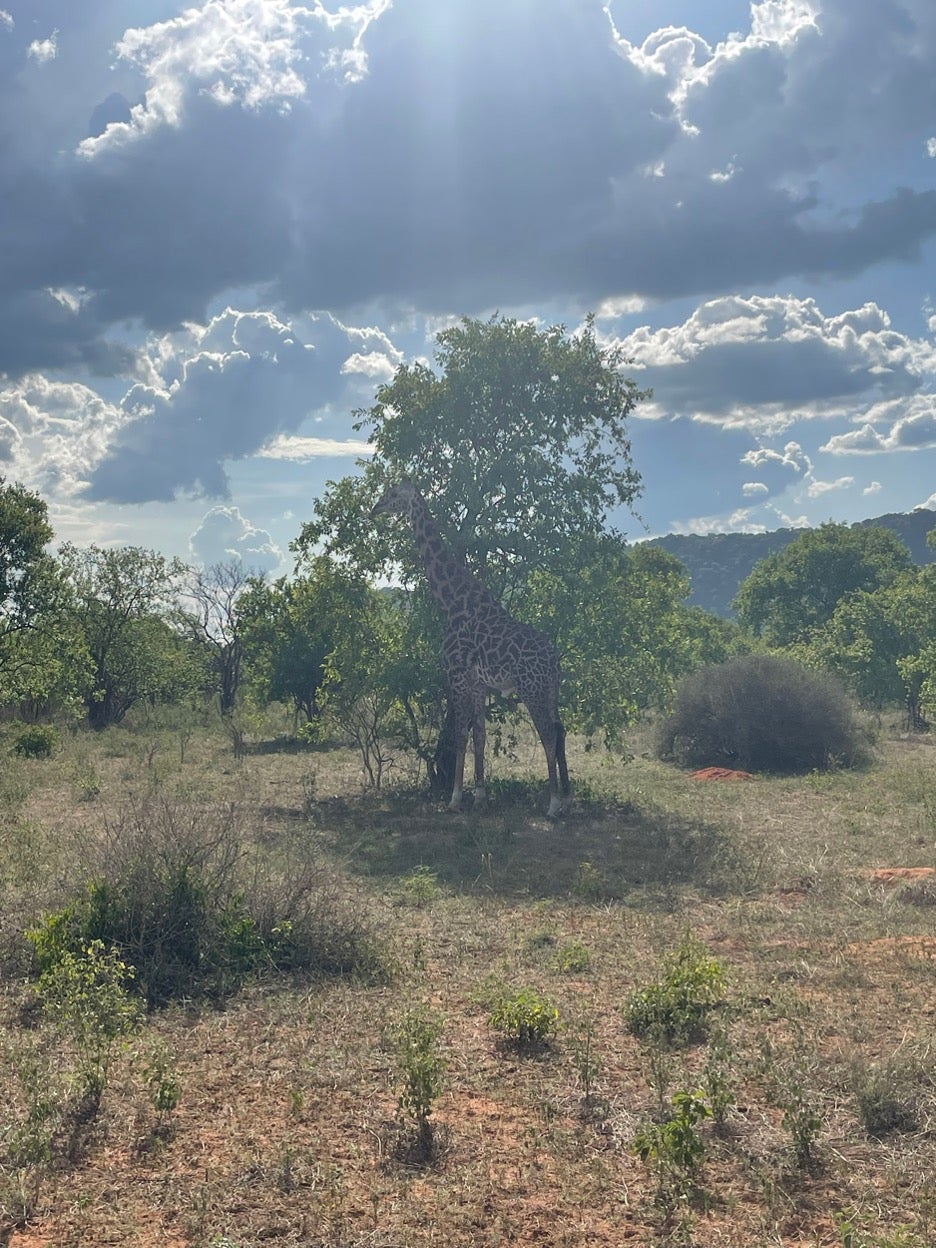
Once we arrived at the park, we lifted the roofs on our safari trucks and were able to see out of the top of the vehicle. On our safari we saw many different animals including jackals, impalas, weaver birds, giraffes, hippo, giant cranes, baboons, zebra, crocodiles, warthogs, kudu, elephants, lions, vultures, other bird species. We got the rare opportunity to see lions eating a giraffe carcass, as well as a herd of elephants roaming throughout the park. Our guides were extremely helpful in identifying animals, describing their behavior, and detailing the ecology of the park. After our safari we discussed issues of water use in Ruaha NP. Upstream from the park, the river is sometimes diverted for farming, causing dry spots which affect wildlife behavior. The government is working to protect entire watershed to allow for river to flow uninterrupted.
To conclude our night, we enjoyed a bonfire with our guides and park rangers, followed by beautiful stargazing with no light pollution. We spent the night lodging in the national park in grass roofed huts known as bandas.
